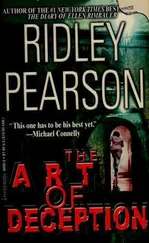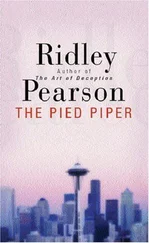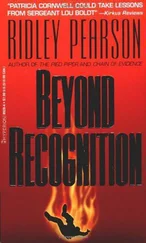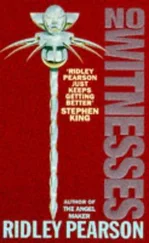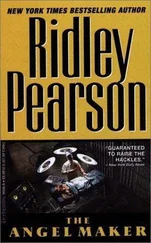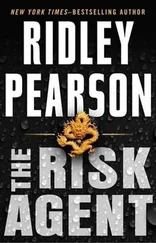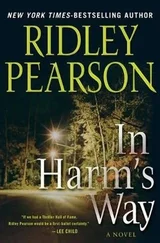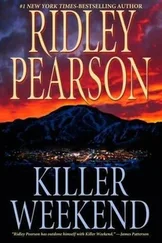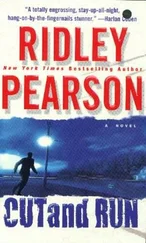He retrieves his camera bag from the room. The windbreaker is disgusting from his rolling around the alley. He leaves it behind. Ten minutes later they’re under way again. Sonia returns his iPhone to him, her eyes apologetic.
The water taxi driver makes turn after turn and soon Knox has lost track of their location. The narrow canal houses—their high gables designed to hold winches for hauling up prosperous merchants’ goods and furniture—give way to the ubiquitous brick buildings of the outer neighborhoods, providing Knox with some indication of the distance they’ve made. Travel by water is so much faster than surface streets, further complicating his task. He would like a GPS fix. The current SIM card in the phone doesn’t allow for GPS; the other chips are in his jacket, back in the hotel.
Sonia’s holding her hair out of her face and looking across the boat at him. Not exactly the way a reporter would. More like a woman. A curious woman at that.
“Where’d you learn to fight like that? Back there?”
“U.S. Army,” he lies.
She studies him. “Thank you.”
“I could say ‘My pleasure,’ but I’d be lying. Tell the truth,” says John Steele, the photographer, “I was scared shitless back there.”
“Be careful, John. It will serve you well to not forget I have built my career on conducting interviews.” She leaves it there, but they never lose eye contact in the flickering streetlight that struggles to reach the canal through trees and bridges.
“Did you recognize them?”
“No. But it was dark. They were dressed well for a pair of thugs.”
“How do thugs dress?”
“Better than I thought, apparently.”
Another turn and the taxi slows. It pulls up to a dock that rocks in the wake. The driver holds on to a cleat while they climb off amid the slap of water against the canal wall. Sonia pays him. The boat pulls away.
“Are you coming?” she asks.
But Knox is keeping his eye on the driver, whose cell phone is already out and to his ear. “We’re here to interview the teacher?”
“Yes, of course.”
“We have ten minutes to get out of this neighborhood. Maybe less. I hope the house is close by.”
“That’s ridiculous. How can you know that?” Nervous. Apprehensive.
He wishes she wouldn’t do that. Appreciates Grace for her levelheadedness.
“The driver. The boat operator. I think he may have recognized you. He was on his mobile phone the moment he pulled away.”
“So?” She leads the way across the street and to the right.
Knox looks for a landmark or street sign. These neighborhoods all appear the same.
“It’s common enough practice for certain elements to seek outside assistance when trying to find someone like you,” he says.
“The police? I have nothing to hide from the police.”
But she walks faster, pulling away from him. He gives her the space, gives her time to think about it. She stops abruptly and turns to face him. “Do not patronize me. I confess I’m unfamiliar with being someone’s target, but that does not give you the excuse to take advantage of me. If you are implying what I think you are implying, I do not accept this at all! The entire city is looking for me? Who is the naïve one?”
“Seven minutes,” he says. “Maybe less.”
“You’re the big expert.”
“I’m the big expert. In this, yes. I may not have many useful skills.” He glances down at his camera bag to make the point. “But I’ve done some things I’m not so proud of, and I know the streets—evidently better than you. This would be the wrong time to doubt me.”
“Only the police have that kind of reach.”
“Six and a half minutes.”
“It’s going to go longer.”
“Then we need an exit strategy. We can’t be walking the streets. No taxis. No trams.”
“You are overreacting.”
“The Fiat across the street. I’ll need a tennis ball.”
“What?”
“Better if you ask her for it. And I’ll need you to stall her long enough for me to get a knife out of the kitchen.”
“This is part of that street savvy of yours, I suppose?”
“You suppose right. Six minutes.”
At the next door, she lets them inside. Her finger roams the board and rings an apartment one flight up although there’s no inner door to breach. Knox remains two steps below her as they climb, his attention divided to include the door to the street. He can move his arm, though it’s numb. His side hurts where he was zapped. He would like to believe he’s thinking clearly, but knows better. It leaves him paranoid and prone to overreact. A door coming open above them sparks a wave of adrenaline.
The woman who awaits them is in her early forties, with tired eyes and crooked eyebrows. The apartment is modest. Two tweens study at the kitchen table. There is no sign of the husband, but there’s evidence of him—an extra-large sweatshirt draped over the arm of the couch, a hunting magazine next to the well-used television remote. She shows them inside. They decline the offer of something to drink. Knox checks his watch, making sure that Sonia sees him.
The conversation starts awkwardly with the teacher issuing concerns and denials. This is not something she would usually do. She would typically consult with a parent first. She doesn’t hold the press in high regard, and yet is quick to make Sonia an exception. She is understandably nervous.
Sonia is an adept interviewer. Knox takes mental notes. His wrist is angled on his lap so he can see the watch face. Two minutes. While Sonia works the woman, Knox excuses himself to the washroom. He passes through the kitchen in order to say hello to the kids. He steals a knife.
By the time he returns, they are into the crux of the interview.
“. . . only occasionally,” says the teacher, in Dutch.
Sonia recaps for Knox, also in Dutch. “Elizabeth was just telling me that this student of hers, Maja, misses more days than she attends, but is an eager student when in attendance.”
“Truancy is often just like this. Yes?”
“American?” Elizabeth asks.
“My father was an American serviceman,” Knox lies, staying with the spoken Dutch.
“Elizabeth has a picture the girl, Maja, drew in class. Perhaps you could set up for that over there,” Sonia suggests, pointing to the other side of the small room. She indicates the pen and ink watercolor on the coffee table. It shows several young girls around another piece of colorful art—a rug? One of the girls has what looks like a rope coming out from beneath her crossed legs. Sonia is right: it’s a compelling visual.
“So this girl, Maja, attends only intermittently.” It’s a statement.
“Yes. Just yesterday a man who identified himself as the father showed up with the intention of bringing her home. However, Maja fled out the window before he could take her.”
“You contacted me because . . . ?”
“Well, the artwork, of course. And the man as well. And her reaction, of course. She isn’t the only girl, I can tell you that much. But the teachers don’t talk about it amongst themselves, and there’s very little done about it, and I’m not sure why that is. But I have a niece, you see? Your article, and of course the bombing . . . if I called the police I would have no choice but to be involved. With you it is different.”
“It most certainly is,” Sonia says, attempting to reassure her. “These other girls you refer to . . . do you have names?”
“No.”
“Your colleagues, then.”
“Carefully, please. I can ask. Yes, of course.”
“But the more names, the more sources for my story, the more credible.”
“You do not believe me?” Her eyebrows join above her nose as she expresses her offense. She’s turned toward Knox in distrust.
Читать дальше

